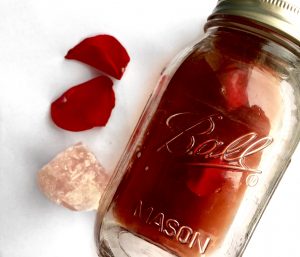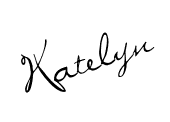BLOGPOST: DIY, How to Make Rosewater
Earlier this week was Valentine’s Day, which means a lot of people currently have wilting roses. Before you throw your flowers away, I wanted to share a super easy, all-natural DIY for herbal rosewater 🌹

I don’t typically buy roses because
1.) thorns
2.) they’re somewhat expensive
3.) THORNS
Also, roses are cliche. But I bought myself roses on Valentine’s Day, because they looked really pretty (and they were 50% off, but that’s besides the point). I didn’t think it was *that* weird until a lady in line at Walgreen’s basically shunned me for my self-love. Our conversation went something like…
Lady: Oh! I see you’re buying flowers! Who’s the lucky lady?
Me: The lucky lady is me. I’m buying them for myself.
Lady: …. *slowly walks away*
I think she should buy herself some flowers too, and be her own lucky lady! Whenever I buy flowers (holla @ the LA flower market in downtown), I feel like a fictitious version of myself. In one hand I have fresh flowers and in the other, I’m holding a baguette. Also in this fantasy: I live in Paris, wear a lot of skirts, and regularly use the words “lovely” and “darling”.

~Anyways~ on to the DIY.
WHAT YOU’LL NEED
- Fresh roses: Pick up organic roses! Whenever I’m using flowers or herbs for a recipe, I always ask if they are organically sourced and grown without pesticides.
- Water: Distilled or tap will work just fine. I used tap water, because that’s what I shower / wash my face with anyways, but I know some people prefer distilled water when it comes to skin care. Also, the rose’s essence will be diluted if you add too much water, so fill your pot according to how many roses you have.
- Pot + stove
Okay, now, are you guys ready for the super difficult, complicated directions? Put the rose petals into the pot, add water, then simmer on the stove at low heat. IT IS SO EASY. Keep the water simmering until you see the rose petals losing color and releasing fragrance. I promise your kitchen is going to smell like a rose garden. xx There are other ways to make rosewater (my friend Lilly puts the petals in a mason jar and lets it sit in the sun for three days), but this stovetop method seems to be the most ideal to me.

It’s crazy how huge cosmetic companies sell rosewater for a ridiculous amount of money when it’s so inexpensive to make. Plus, when you make your own, you know it’s all-natural and doesn’t have the added chemicals found in mainstream skin care products.

So, what exactly is rosewater used for? I use it as a facial toner, because it hydrates, reduces redness, maintains facial pH balance + many more benefits. I have a bit of rosacea, and the anti-inflammatory qualities have been incredibly healing. You could also use it as a body spray or natural perfume, because it smells amazing on its own. Rosewater has strong aromatic qualities, so you can rinse your hair with it, add it to your bath, use it as a fabric spray, etc. I’ve been spraying rosewater in my room for the past couple days, and it smells like a botanical wonderland…
Another interesting way to use rosewater is drinking it. I’ve drank rosewater, rose tea, and various strange flower juices before; rosewater in particular had a distinct flavor (that’s the nice way of saying it tasted gross). Topical skincare is my favorite rosewater usage, but you should try out different methods and see what works best.

Thanks for reading! This is the first DIY I’ve posted in the new year, so let me know if it’s a series I should keep writing. Natural, homemade recipes are always fun to share, especially when it’s eco-friendly and organic.


February 17, 2017 @ 10:50 pm
I’m surprised by how easy it is to make!! I buy the Mario Badescu rose water but I am going to try making it. And yes keep doing diy’s 🙂
February 18, 2017 @ 4:34 pm
Katelyn I love ❤️ post !!! Keep them coming !!you are a very inspirational young lady .
My sister and your mother went to school together.
Keep up the good work!!
February 19, 2017 @ 6:52 pm
Hi! Katlyn, you have every right to treat your self to roses or anything you like. I am going to make some rosewater. It’s sounds like it’s going to be wonderful. Thanks for the information. Yes it will make my house smell delicious too!
February 26, 2017 @ 3:24 am
This is a cool idea, but my Valentines roses are pretty much dead now 🙁 I think I am going to buy a new batch specifically for this recipe
March 1, 2017 @ 7:51 pm
Love this! Tried it turned out amazing. My kitchen smells wonderful! Thank you 💜